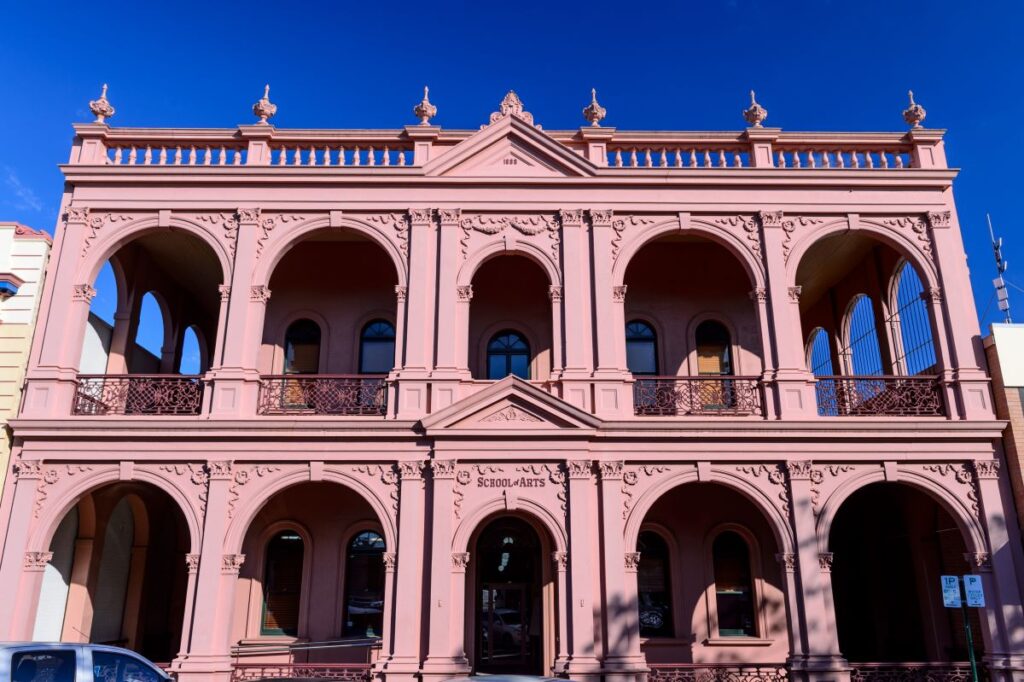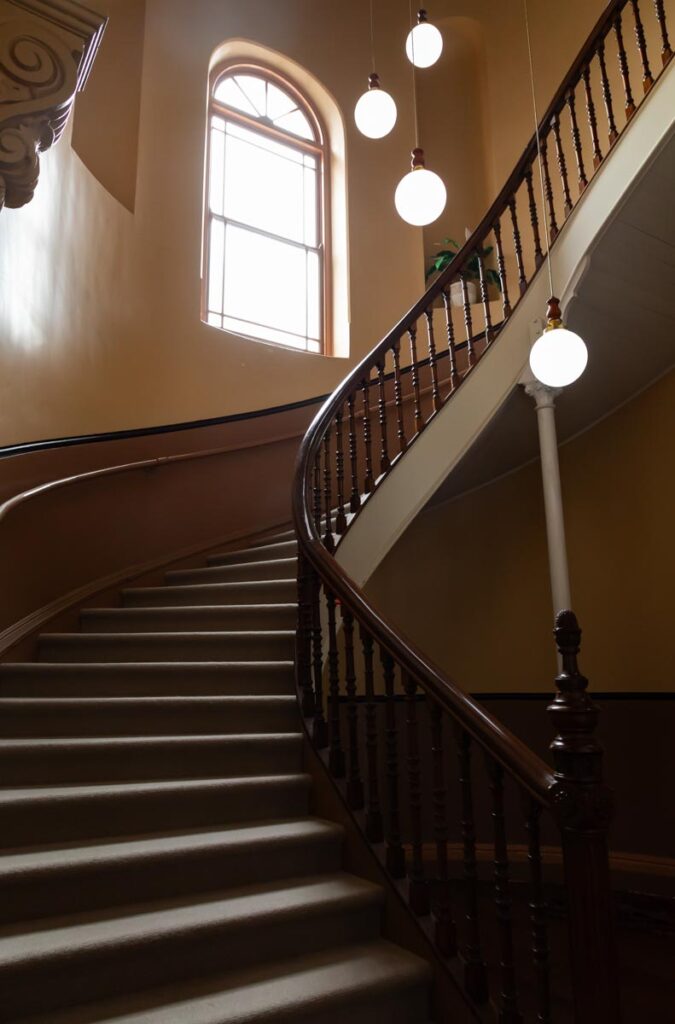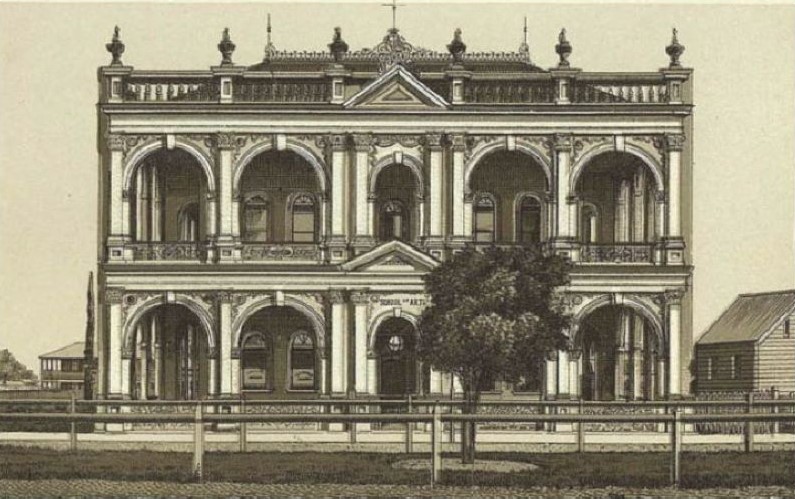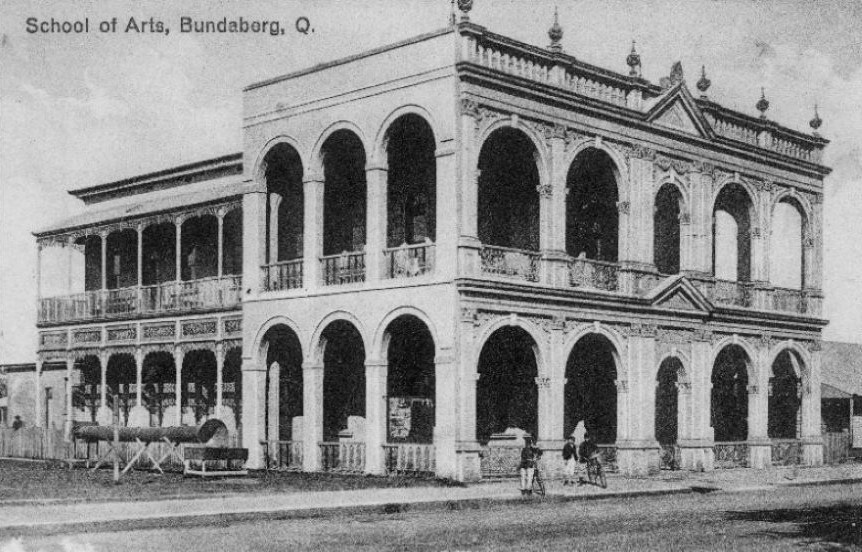
The Bundaberg School of Arts is one of the region’s most notable buildings, not only due to its classical revival style but also its rich history.
The substantial two storey rendered brick building is State Heritage listed and has strong associations with the community as a source of civic pride for well over a century.
The building continues to serve the people of Bundaberg today by being available for hire for cultural and community purposes.
The Bundaberg School of Arts is part of a network of similar institutions which sprang up in any town of consequence in Queensland during the 19th and early 20th centuries and were a measure of prosperity and progress.
The scale and style of the building demonstrate the wealth and importance of Bundaberg as a sugar city during this period.
Schools of Arts were community based and played a valuable role in the dissemination of information and the provision of facilities for lectures, meetings, games of skill and community events.

The School of Arts is established
The first School of Arts committee in Queensland was founded in Brisbane in 1849 with the aim of ‘the advancement of the community in literary, philosophic and scientific subjects’.
As towns and districts became established, local committees were formed to set up schools of arts, which became one of the principal sources of adult education.
The government recognised this by making land available, subsidising books and assisting with building costs.
In 1871, three allotments at the corner of Bourbong and Barolin Streets were reserved for a School of Arts to cater for the population of Bundaberg which at the time was about 100 people.
The first building was a simple weatherboard structure followed by a new timber building in 1880 which housed a library of notable quality.
In 1884 a new building was designed by Anton Hettrich, a German born and trained architect who designed more than 300 buildings when he lived in the area.
Construction started on 2 June 1888 and the old building was moved to the rear of the site to allow for the continuation of services.
The Bundaberg School of Arts Trustees took possession of the completed building on 16 April 1889 for a cost of £3300.
The ground floor housed a committee room as well as rooms available for rent and the upper level had a large reading room which opened out on to the verandah, a natural history museum and chess rooms.

The institution grows in popularity
From 1889, the School of Arts offered technical classes in a variety of practical subjects including drawing, shorthand, bookkeeping, typing, dressmaking, millinery, chemistry, dairy work, manual training and carpentry.
These were so successful that in 1898 a timber hall was built behind the building which had a stage and piano and was hired out when not in use, expanding the activities of the institution.
In 1908 the Technical Education Act shifted responsibility for provision of such classes to the government, a factor that led to the demise of Schools of Arts institutions in general.
Membership of the Bundaberg School of Arts was never large and the institute was mostly run by volunteers, however even during the Depression when many Schools of Arts closed after government subsidies ceased, the Bundaberg institution continued to do well.

However, alternatives for education and leisure activities and the Libraries Act of 1943 (which provided free lending libraries) all contributed to the gradual closure of Schools of Arts around the state.
Bundaberg’s museum collection was broken up after World War II but the earnings from rentals and the excellent library helped the School of Arts continue to survive.
In 1969, the Bundaberg and District Museum was formed and moved into the hall the following year.
The School of Arts library remained the only lending library in Bundaberg until the 1970s, when the city council conducted a feasibility study with a view to establishing a free public library.
The future of the building was uncertain at this time and members of the Bundaberg Historical Society led public support to retain it.
The land, building and assets were transferred by the Trustees of the School of Arts to the Bundaberg City Council on 1 January 1979 and the library was transferred to the former Customs House and Commonwealth Bank in Quay Street in 1981.
The building is now available to the public for hire with meeting rooms, an exhibition gallery and kitchenette.
Other news:






The School of Arts is nowhere near the oldest building in Bundaberg. The oldest is a 2 storey brick built in 1878 followed by a long timber building 1879. Also there are a number of shops built earlier in the 1880’s. I don’t think any are heritage listed
I should add that I am referring to buildings still on their original site in the Central business district. There are several older buildings (schools and churches) that have been shifted. As well there is a house that probably dates from the 1870s